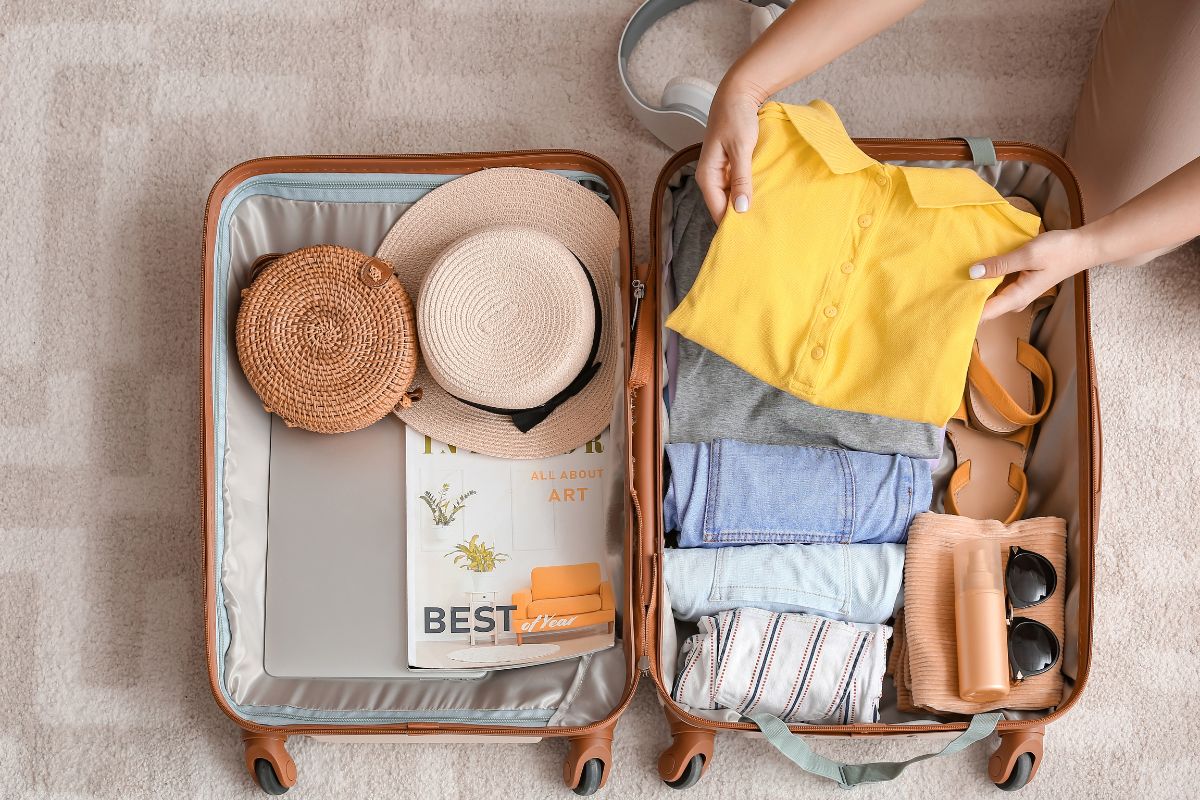When we travel internationally, people often ask, “How do you access your money?” or say, “It’s so expensive to use ATMs and credit cards abroad!” Let us share how we travel the would without losing money as through our ATM fees and credit card hacks.
Our Favorite Checking Account for Travel
We use the Charles Schwab Bank Investor Checking Account, and it only takes a few minutes to set up. This account also comes with an investor account (but don’t worry—you don’t have to use that part). Here’s why it’s great for travel:
-
No minimum balance (you don’t need to keep a certain amount of money in the account)
-
No monthly fees (they don’t charge you for having the account)
-
No extra fees for using your card in other countries
-
Unlimited ATM refunds (if an ATM charges you to withdraw money, Charles Schwab pays you back)
-
FDIC insured (your money is protected)
The only downside? The interest you earn on the money in the account is really low, but since this isn’t a high yield savings account, that’s okay.
How We Use It: ATM Cash Withdrawals
When we need cash in local currency, we head to a reputable, international bank’s indoor ATM for security reasons. These ATMs are typically located in well-guarded areas with cameras and are less likely to have card skimmers (devices used to steal your card info).
Most ATMs will offer an English language option. Just follow the prompts, and when you get to the currency conversion screen, always choose to withdraw in the local currency (rather than USD). Why? Because your bank (Charles Schwab), will give you a better exchange rate than the ATM.
We only keep a few hundred dollars in this account at a time, so if our card gets lost or skimmed, we won’t lose a large sum. It’s easy to transfer more money into the account from an external checking or savings account (transferring money from another bank to Charles Schwab), though this can take 3-5 business days depending on the external bank, so a bit of planning is needed.
Cash vs. Card: When to Use What
Payment preferences vary from country to country. For example, Scandinavia and much of Europe have excellent credit card infrastructure, meaning you might not need cash at all. On the other hand, other countries such as Mexico, Central America, and East Africa, cash is still king.
We do carry a small amount of US dollars (USD) for emergencies since many countries accept it. However, we try not to use USD because:
-
The person receiving the money has to exchange it for their own currency, which can be a hassle.
-
Exchange fees may apply, which can be rather substantial.
-
The value of the dollar can change, meaning they might get less money.
Our Go-To Credit Card for Travel
For most of our purchases, we use the Chase Sapphire Reserve credit card. This card has saved us thousands of dollars with travel perks and rewards. In fact, we’ve even flown for free to six continents by using the points we earn from it!
Why We Love the Chase Sapphire Reserve:
-
Earn Points: You get points for every purchase, and they’re some of the best for travel rewards. When booking redemption flights or hotels, using your points to book, we always use Daily Drop Pro to search for the best usage of our points.
-
$300 Travel Credit: You get $300 back each year to cover travel costs, like flights or hotels.
-
Free Global Entry: Pay for Global Entry with this card, and they refund you the fee.
-
Free Airport Lounge Access with Priority Pass: You can relax in airport lounges for free, where you get snacks, drinks, and sometimes even play areas for kids.
-
Rental Car Insurance: Decline the rental company’s insurance, and you’re covered for collision damage.
The card also has other benefits, like trip cancellation insurance, help with delayed baggage, and even emergency evacuation if something serious happens while you’re traveling, if you use this card to purchase a flight or accommodation for your trip.
The Downsides of the Chase Sapphire Reserve:
-
It has a high annual fee.
-
You don’t earn as many points on everyday purchases (just travel-related ones).
Even with those cons, this card has helped us save so much on travel, and the points have made it possible to fly around the world for free!
Additional Money Related Travel Tips
-
Avoid ATMs in Tourist Areas: Try not to use ATMs in high-traffic tourist spots or airports, as these often have higher fees and less favorable exchange rates. Instead, opt for ATMs at reputable banks in town.
-
Carry Some Local Currency: Always have a small amount of local currency in an extra pocket for quick transactions, like haggling in markets or handling unexpected situations.
-
Diversify Where You Keep Your Money: Don’t keep all your money in one place. Spread it out—some with you, some with friends or family, and some back at your accommodation to reduce the risk if something is lost or stolen.
-
Blend In When Using ATMs: When withdrawing money, try to blend in with the locals. Avoid wearing flashy clothes or jewelry. Take your cash and leave quickly without drawing attention.
-
Consider a Travel Wallet or Belt: For extra security, use a money belt or travel wallet that fits under your clothes to keep your cash and important documents safe.
-
Use RFID-Blocking Wallets: Protect yourself from unauthorized scanning of your credit cards or personal information with RFID-blocking wallets.
Conclusion
When we travel, the Charles Schwab Investor Checking Account and the Chase Sapphire Reserve credit card are our go-to tools. These help us avoid fees, get better deals, and even travel for free!
More on the Blog:
How a gap year can transform your relationships and perspective.
Learn how we pack for our travels with 2 young kids.
Our favorite travel car seats.






